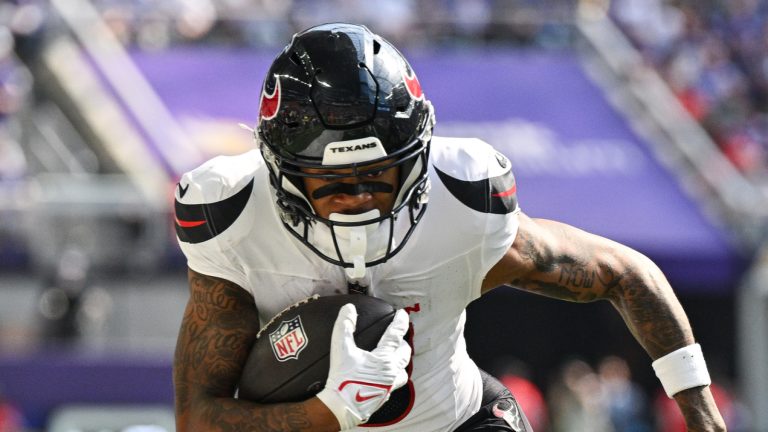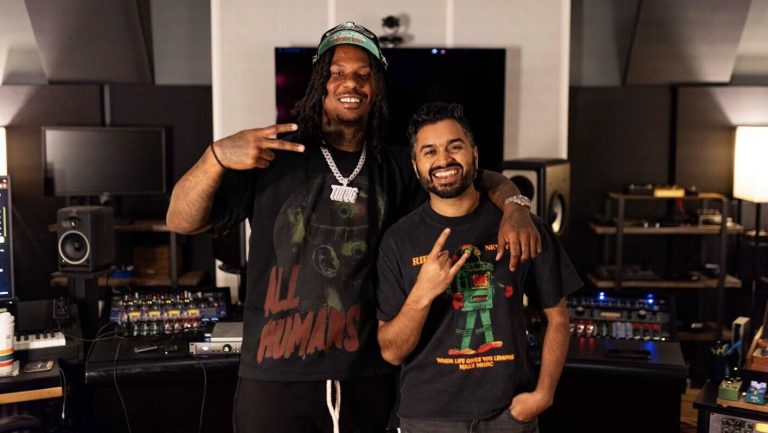Satirist Garrison Keillor began his show thus: “Welcome to Lake Wobegon, where all the women are strong, all the men are good looking, and all the children are above average.”
Welcome to the 2025 version of Super Rugby Pacific, where all scrums are successful, all the highlights are viral, and all the Australian teams are above average.
This competition is not fictitious, line breaks are being converted in multiples, and the rise of the remaining four Aussie states is welcome indeed.
Yet the term exams loom as the 4-1-4 (-4 in points) Force weathered the five-loss Hurricanes (+22 in points differential) by reaching: a draw.
The Perth boys now face a clearly above average Chiefs, and the defending champion Blues, who have below average results and appear to have swapped roles with last year’s Crusaders.
The mean may yet revert.
A Super season is a sprint: the fewest matches of the top four rugby union leagues, mandates from headquarters to cut static time from game broadcasts (an average of 73 seconds cut), conducive weather (till now), and the general skepticism of blitz or umbrella rush defences (with perhaps one hybrid exception in the Scottish-coached Canes) leading to scorched earth scoring sprees spiraling virally.
What can we make of it thus far?
Praise the Pacific
Recent Super Rugby was justifiably knocked for a lack of clear identity and a feeling nobody was at the wheel in the SANZAAR HQ said to be at 33 degrees 53’28” South and 151 degrees 15’00” East.
This season, with Moana Pasifika finding a fanbase, most of the rugby world devoted to watching wild Drua games in Fiji, and highlight packages featuring spicy athleticism, the envy of all leagues, the feeling is the P in SRP has put an indelible stamp on proceedings. This is now a Pacific league, with an exact flavour.
The loss of a major metropolitan area with significant Pasifika rugby roots should not be overlooked, but if “inkblot insurgency” rugby regrowth ensues, the league has a template: embrace place.
Super Rugby Pacific has a “there” there: a clearer identity now. Average game attendance has risen by about a fifth over last season, accompanied by a third more watching on Aussie TV, a tenth more in New Zealand, and a whopping 400,000 or more tuned in (a third of the total population) on Walesi App.
With talk of ‘poaching’ (otherwise known as recruitment) and realities of tight money in all leagues, no one is ‘safe’ from change. Knowing how to sell what you are producing to a bored, restless, clip-obsessed market becomes easier with differentiation.

The Drua have breathed fresh life into Super Rugby. (Photo by Pita Simpson/Getty Images)
Super Rugby began as a far flung ‘best versus the best’ Big Three competition, in which the sprawl of distance was overcome by honestly featuring teams with 17 or 18 or more of a legitimate World 23 at the time.
As the Northern spigot opened the player drain, and the league flirted with Buenos Aires, Singapore, and adding teams, fans and marketing departments got on the same page: disinterest.
Long term, if the league cannot come up with an ANZAC free trade zone for players, a road block may yet form, but the initial issue is being addressed: who are we?
This is a restricted Pacific rugby competition anchored in the blue water islands of Australia, New Zealand and Fiji, and played with a definitive style, for better or worse.
The Pacific is the largest oceanic division in the world, the deepest, full of volcanic energy, biodiversity, and danger.
This works as a brand for rugby, if the money can get to and through the right places.
Parity in the Pacific
Did the Waratahs, Moana, Crusaders and Force improve from last year? Yes.
Did the Blues fall? Yes, even if they will take some beating from this point on.
Did the Chiefs, Reds and Brumbies mostly hold even? Looks like it.
Did the Canes and Drua slip? The Highlanders stay flat? Also yes and yes.
Whilst there does appear to be a top two-some, there is also a grand peloton beneath, particularly if bonus points are ignored.
The good news is nobody is an easy foe at home; the bad news for tipsters is nothing seems certain. The average margin is 11.6 points (sixth smallest in history) with an average of 4.3 lead changes per match (28% or more games featuring a lead change in the final ten minutes). If there were five seasons with smaller margins, perhaps it is less the jeopardy that is making folks happy and more the gap closing.
Nobody would begrudge an Aussie rugby renaissance; the sport needs it. However, the next months will shed light on whether the ditch was narrowed by decline at top or rise of middle.

Chiefs star Tupou Vaa’i celebrates during their win over the Queensland Reds earlier this month. (Photo by Michael Bradley/Getty Images)
The race to the final six does seem hotly contested by ten teams at this stage, which must make many happy. Inevitability is a hard sell.
Each league has an easiest-beaten team by definition, but the Drua in Fiji are not nearly as easily beaten as Newcastle or Vannes or the Dragons this year, as the Waratahs just found out.
One school of thought postulates the healthiest, most lucrative leagues are hallmarked by dynastic battles amongst familiar great powers; another points to “any given Sunday” parity as the goal. The Crusaders ruined any game of thrones idea long ago; Super Rugby just had one dynasty, interrupted.
Now we see a league of inches; the irony may be the Saders winning still.
Is Super Rugby Pacific in Delusion?
On ‘The Breakdown’ flyhalf fisherman Stephen Donald opined Jordie Barrett, who is starring for 900-Test cap Leinster, coming off the bench most of the time to augment an almost Irish Test backline and coached by Rugby World Cup defensive Svengali Jacques Nienaber, and bolstered by monster lock RG Snyman would also not start for the All Blacks, because “the URC competition is probably a low, a very, very low level compared to Super Rugby.”
Donald did grant “the Champions Cup stuff certainly would be” up to Super Rugby level. Former Crusaders and Hurricanes lock Joe Wheeler wondered if URC rugby would ‘harden him up’ enough for the demands of international rugby.
Obviously, ‘Razor’ Robertson and Joe Schmidt are not delusional men and are well aware the best teams in all four top leagues would fare fine in the others, but it is Super Rugby Pacific which would have to adjust the most to the additional depth required for the increased injury from more rounds of league plus champions and challenger cups, and how the leading teams have been able to stock a side with exactly the foreign Test star they need: a Handre Pollard or Julian Montoya at Leicester, Guido Petti and Pete Samu at Bordeaux, Blair Kinghorn and Jack Willis at Toulouse, or Finn Russell and Thomas du Toit at Bath.
Four-position Jordie Barrett has likely learned all there is to know about Super Rugby in over a hundred games for the Hurricanes (almost 800 points), is a two-time World Cup starter in his 68-cap career for the All Blacks, and now in the URC he is coached in the stingiest defence on the planet, and faces established internationals like Bundee Aki, Sione Tuipolotu, Huw Jones, Andre Esterhuizen, Damian Willemse, and rising stars Sacha Feinberg-Mngomezulu every week. He is brought into the starting lineup to play in the knockout tournament of Europe, where he goes up against the best of Argentinian, English and French midfielders; hardly a step down from a Canes-Landers derby or a trip to Perth or hosting the Drua.
Rather than a sabbatical in Japan, Jordie Barrett himself says the URC is a great place for Rieko Ioane to “develop and he’ll see a lot of improvements up here as a player and get out of his comfort zone; it’s a chance to grow.” Two weeks ago, Barrett won three breakdown turnovers in a match against Glasgow, who had a Lions candidate (Tom Jordan) at No.12 and a Lions opensider (and Scottish captain) cleaning rucks, Rory Darge.

Jordie Barrett (L) and RG Snyman of Leinster have been warmly embraced in the Irish capital. (Photo By Sam Barnes/Sportsfile via Getty Images)
He has confirmed Robertson keeps an eye on his progress; surely the All Black brain trust would have had something to say to Ioane if they felt it was a move downward.
To be selected for Leinster, Jordie Barrett must beat out Robbie Henshaw and Garry Ringrose, or Hugo Keenan at the back. Last year, as the Canes went 12-2 with a 199 positive points differential, he was the best back. This weekend, Canes backs missed 15 tackles in Perth, squeezing a draw. How badly do you reckon Leinster would have beaten the Force?
Comparing leagues who do not play each other (as the Top 14, URC and Premiership do) is tricky and requires inference and extrapolation. Clearly, the best two New Zealand teams are likely in the top ten or 15 best teams in the world; seeing as how closely they correspond with the second best Test team in the world, in contrast to the Springboks, who have about half of their players in Japan.
But it is not clear Super Rugby is preparing Kiwis for Test rugby as well as before, lately.
We can look at style characteristics of the leagues. Out of about 45 teams in the four top leagues, Super Rugby has the top three in gainline percentage; five of the top ten.
Is that truly because the Highlanders and Brumbies are better – harder, in Wheeler’s parlance – than the massive French teams? Or might there be a more obvious possible answer?
Line breaks in Super Rugby turn into tries. Four of the top five in the 45 clubs are Super teams: the Chiefs, Moana Pasifika, Crusaders and Waratahs. The lowest break-to-try converter performers in Super Rugby (the Force) are 21st in the world, ahead of teams like the Saints, stacked with English starters like Alex Mitchell, Tommy Freeman, George Furbank and Fin Smith. This suggests a different level of scramble defense from what Jordie Barrett is seeing.
The height of tackling is also lower outside of Super Rugby: ironically, the Canes are the only Super Rugby team (33%) in the top ten for low tackles (8th). Half of the “highest ten” are Super Rugby teams; this is not optimal preparation for Test rugby even if red-twenties lessen the effect of a card. Jordie Barrett made 16 tackles in a Champions Cup match this month, more than former World Player of the Year Josh van der Flier.
The Canes have seven yellow cards so far in nine games, a rate which would put them on track to be worst in the URC: the zeal may be ‘hard’ but clearly Robertson would prefer to skip cards.
How do teams score tries? From whence do they come?
Five of the bottom seven “tries from first phase” teams are in Super Rugby; four of the top ten “score from your own half” are in Super Rugby; disproportionate numbers and not necessarily good for Test rugby.
Test rugby always returns and reminds us of hard truths; Jordie Barrett went prospecting. Rather than get soft, he probably added skills best obtained precisely where he is now and where Rieko Ioane will be next year (playing derbies against a Clayton McMillan-led Munster).
Super Stars
As we know, rugby is not as star-driven a sport as most, with 29 other guys splitting the limelight, but as this exhilarating competition heads down the back nine, we should note six stellar competitors, not always jumping to Test qualifications, but just celebrating skill and courage.
Otago Boys’ own Semisi Tupou Ta’eiloa is making a powerful bid for new boy of the term. With perennial high carrier and Wallaby skipper Harry Wilson hurt, Ta’eiloa is lapping the field in runs with ball in hand: 142. Every team needs a man who says: “again.” They are usually older than 21.
Harry Potter has beaten or waved off 35 tacklers and made 13 clean line breaks: the remarkable thing about the Force man is how few carries it has taken him to produce that level of danger. Add in his innate sense of space and time and the package is not far off: his 11 offloads have set off alarm bells in opponents’ coaching boxes.

Harry Potter has the unique ability to conjure up something out of nothing. Photo: Jonas Pretorius, Toyota Cheetahs Media
Timoci Tavatavanawai takes the high way and the low way, but there is not much defenders can do about a 111kg ball of fire with an epicenter of gravity around his earthquaking thighs: 47 tacklers bounced, discarded.
Sevu Reece appears riled up: chasing records and slipping back into the midfield for fun. His offload total race with Will Jordan is a cool sideshow; one wonders if they have a few bucks on the final outcome. With 13 line breaks and almost half (6) finished in tries himself, the Sader does not look done, at all, yet.
Depending on what happens next, Carlo Tizzano may be having the best year of his rugby life. He has made the most tackles (the only defensive stat Super Rugby shows) but also has stepped up his carry-clean game, throwing himself into every attacking ruck he can, along with his skill at mucking rucks defensively, and is scoring tries for fun. Leading the try scoring and tackling lists of Super Rugby cannot have been done before?
Antonio Shalfoon is part of a Crusader resurgence with almost just as many post-contact metres as pre-contact, big tackles and frequent, strong ruck presence and good villain looks.
The stretch run awaits.







